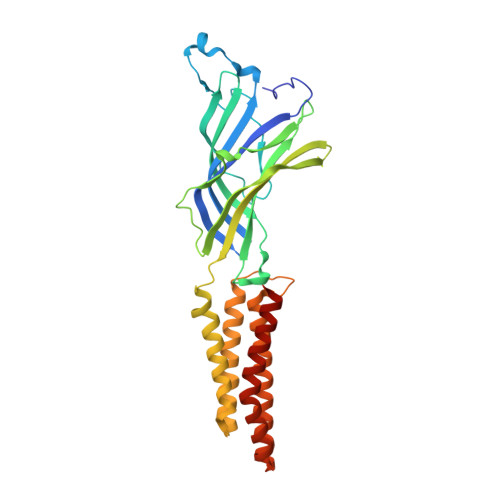Identification of a pre-active conformation of a pentameric channel receptor.
Menny, A., Lefebvre, S.N., Schmidpeter, P.A., Drege, E., Fourati, Z., Delarue, M., Edelstein, S.J., Nimigean, C.M., Joseph, D., Corringer, P.J.(2017) Elife 6
- PubMed: 28294942
- DOI: https://doi.org/10.7554/eLife.23955
- Primary Citation of Related Structures:
5IUX - PubMed Abstract:
Pentameric ligand-gated ion channels (pLGICs) mediate fast chemical signaling through global allosteric transitions. Despite the existence of several high-resolution structures of pLGICs, their dynamical properties remain elusive. Using the proton-gated channel GLIC, we engineered multiple fluorescent reporters, each incorporating a bimane and a tryptophan/tyrosine, whose close distance causes fluorescence quenching. We show that proton application causes a global compaction of the extracellular subunit interface, coupled to an outward motion of the M2-M3 loop near the channel gate. These movements are highly similar in lipid vesicles and detergent micelles. These reorganizations are essentially completed within 2 ms and occur without channel opening at low proton concentration, indicating that they report a pre-active intermediate state in the transition pathway toward activation. This provides a template to investigate the gating of eukaryotic neurotransmitter receptors, for which intermediate states also participate in activation.
Organizational Affiliation:
Channel Receptors Unit, Institut Pasteur, Paris, France.




















